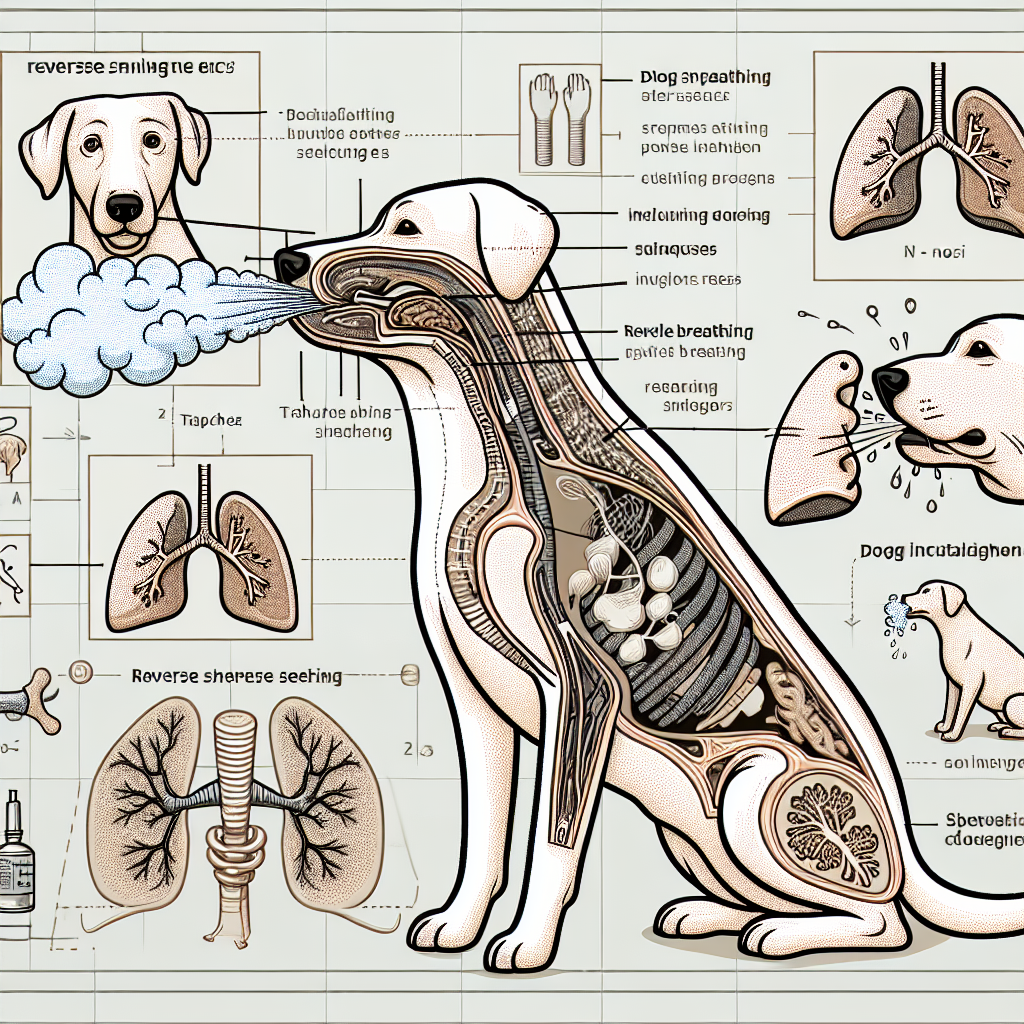===INTRO:===
If you’ve ever witnessed your dog suddenly interrupting a peaceful moment with a series of rapid, wheezing inhalations, you might be grappling with the unsettling phenomenon known as reverse sneezing. Understanding and stopping reverse sneezing in dogs can feel daunting, especially when it seems alarming. This behavior can leave pet owners worried, questioning their dog’s health and wellbeing. Fear not; this guide aims to demystify reverse sneezing, highlighting its causes, symptoms, and effective methods to manage it, helping you approach this issue with confidence and clarity.
What Causes Reverse Sneezing in Dogs and Its Symptoms
Reverse sneezing is often a puzzling experience for dog owners. This peculiar behavior occurs when a dog rapidly pulls air into the nose, resulting in a series of honking or snorting sounds. Although it may sound concerning, the underlying causes can often be benign. Common triggers include allergens like pollen, dust, or strong odors. Additionally, excitement, eating too quickly, or even sudden changes in temperature can provoke a reverse sneezing episode, highlighting the sensitivity of a dog’s respiratory system.
Symptoms of reverse sneezing can be distinctive and include a combination of sounds and reactions. During an episode, your dog may extend their neck, cough, and appear to be struggling to breathe, despite the absence of actual distress. Observing these behaviors can be alarming, leading many owners to fear that their pet is choking or in serious trouble. However, reverse sneezing episodes typically last only a few seconds to a minute, and dogs often return to normal behavior shortly afterward. Recognizing these symptoms is crucial for differentiating reverse sneezing from other more serious respiratory issues.
Understanding that reverse sneezing is generally harmless can provide immense relief to worried owners. While it can seem dramatic when it occurs, many dogs experience reverse sneezing at some point in their lives without any underlying health concerns. However, persistent episodes or accompanying symptoms like nasal discharge or lethargy should prompt a visit to the veterinarian, ensuring that there are no hidden health issues that require attention. Ignoring these signs can lead to misdiagnosis or treatment of more serious conditions, making proper awareness vital.
Effective Methods to Stop Reverse Sneezing in Dogs
When faced with a reverse sneezing episode, the immediate instinct is often to intervene. One of the most effective techniques involves gently massaging your dog’s throat or applying slight pressure to their nose, which can help them regain normal breathing patterns. This method often prompts the dog to swallow, alleviating the episode. Pet owners should approach this with a calm demeanor, reassuring their pet during the process to reduce anxiety and fear associated with the behavior.
Another strategy includes redirecting your dog’s focus by encouraging them to drink water or offering a treat. This method effectively distracts them during an episode, allowing them to shift from the reverse sneezing to a more settling activity. Providing water or treats can also stimulate swallowing, which may help clear whatever irritant triggered the reverse sneezing in the first place. Remember, patience is key; your calmness will encourage your dog to settle, making the process smoother for both of you.
While these immediate techniques can be effective, it’s essential to consider preventive measures as well. Identifying and minimizing exposure to known triggers can significantly reduce the frequency of reverse sneezing episodes. For instance, regular cleaning routines can help limit dust and allergens in your dog’s environment. Additionally, monitoring food intake and ensuring your dog eats slowly can prevent reverse sneezing episodes caused by rapid consumption. Incorporating these proactive steps into your routine not only addresses the immediate situation but also enhances your dog’s overall respiratory health.
===OUTRO:===
In conclusion, understanding and stopping reverse sneezing in dogs is a vital skill for any pet owner. By recognizing the signs, knowing the underlying causes, and implementing effective strategies to manage episodes, you can transform your anxiety into empowerment. Don’t let reverse sneezing disrupt the bond you share with your furry companion; instead, arm yourself with knowledge and techniques to ensure their wellbeing. Share your experiences, ask questions, and continue to stay informed—after all, a well-informed pet owner is the best advocate for their dog’s health. Embrace this learning journey and enjoy the many rewarding moments with your beloved pet!
Measuring Your Dog’s Height: A Comprehensive GuideUnderstanding How Dogs Become Infested with FleasUnderstanding the Lifespan of Pug Dogs: What to ExpectRelevant LinkRelevant LinkRelevant Link
